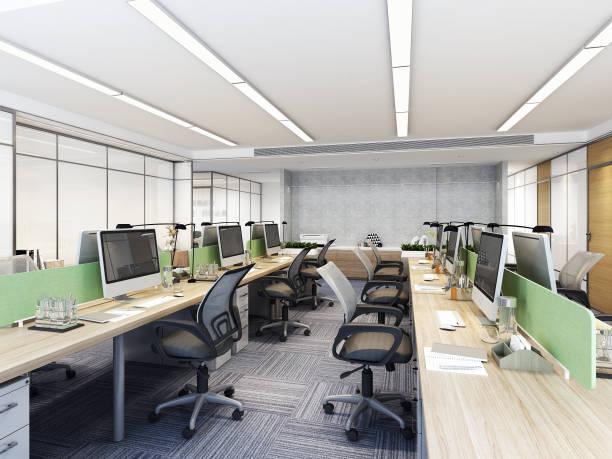Introduction to Office Cubicle
In the realm of office design, the humble cubicle stands as a ubiquitous symbol of corporate life. For decades, it has served as the fundamental unit of workspace organization, offering privacy, functionality, and a sense of ownership to employees across industries. Yet, as modern workplaces undergo rapid transformation spurred by technological advancements and changing attitudes toward work-life balance, the fate of the office cubicle hangs in the balance. In this article, we delve into the evolution, significance, and enduring relevance of the office cubicle in contemporary office culture.
Origins and Evolution:
The concept of the office cubicle traces its roots back to the 1960s, a period marked by a surge in white-collar employment and the need for efficient space utilization. Robert Propst, an American designer working for the Herman Miller furniture company, is often credited with pioneering the modern cubicle system. His creation, known as Action Office, sought to address the limitations of open-plan offices by introducing modular, customizable workspaces that prioritized privacy and productivity.
Initially conceived as flexible, human-centered environments, early cubicles were designed to accommodate diverse work styles and foster collaboration. However, as corporations embraced cost-cutting measures and standardized office layouts, the original vision of the cubicle began to erode. What emerged was a landscape dominated by uniform, sterile cubicles devoid of personality—a symbol of corporate conformity rather than creative expression.
Significance and Functionality:
Despite its reputation as a symbol of drudgery, the office design erves several important functions that contribute to workplace efficiency and employee well-being. At its core, the cubicle offers a designated space where individuals can concentrate on tasks without the distractions inherent in open-plan layouts. This sense of privacy fosters a sense of ownership and control over one’s environment, enhancing focus and productivity.
Moreover, cubicles provide a degree of acoustic and visual privacy, essential for tasks that require concentration or confidentiality. With walls that shield occupants from ambient noise and visual distractions, cubicles offer a sanctuary amidst the hustle and bustle of the modern office. This privacy also extends to personalization, allowing employees to decorate their cubicles with photos, plants, and mementos that reflect their personality and interests.
From a managerial perspective, cubicles facilitate supervision and workflow management while preserving individual autonomy. Supervisors can easily monitor employees’ progress and provide support as needed, without resorting to micromanagement. Additionally, the modular nature of cubicle systems enables companies to adapt to changing organizational needs by reconfiguring workspace layouts without extensive renovations.
Challenges and Adaptations:
However, the traditional office cubicle is not without its shortcomings, particularly in light of evolving work practices and employee preferences. As remote work becomes increasingly prevalent, organizations are reevaluating the role of physical office space and the need for designated workstations. The pandemic-induced shift to remote work has highlighted the importance of flexibility and mobility, challenging the notion of fixed, static workspaces.
Furthermore, concerns about employee well-being and mental health have prompted a reexamination of the cubicle’s impact on social dynamics and collaboration. While cubicles offer privacy, they can also foster feelings of isolation and detachment, especially in environments where teamwork and innovation are valued. As a result, companies are exploring hybrid models that combine the privacy of cubicles with communal spaces designed for collaboration and social interaction.
To address these challenges, designers and architects are reimagining the concept of the cubicle, incorporating elements of biophilic design, flexible furniture, and ergonomic principles. The modern cubicle is no longer a monolithic structure but a dynamic, adaptable workspace that can be tailored to individual needs and preferences. Height-adjustable desks, acoustic panels, and integrated technology are just a few innovations aimed at enhancing comfort and functionality within the cubicle environment.
The Future of the Cubicle:
In an era defined by rapid technological innovation and shifting work paradigms, the future of the office cubicle remains uncertain. While some predict its demise in favor of open, collaborative spaces or remote work arrangements, others argue for its continued relevance as a cornerstone of modern office design. Ultimately, the fate of the cubicle hinges on its ability to evolve and adapt to the changing needs and expectations of the workforce.
As we look ahead, one thing is clear: the office cubicle is more than just a physical structure—it embodies the complex interplay between space, culture, and human behavior in the modern workplace. Whether it undergoes a radical transformation or persists in a modified form, the cubicle will continue to shape our collective experience of work for years to come. In an ever-changing world, the enduring legacy of the office cubicle serves as a reminder of the enduring quest for balance between privacy and collaboration, autonomy and community, in the pursuit of productive, fulfilling work lives.





